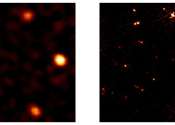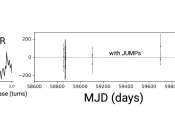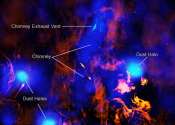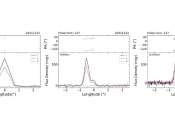The Milky Way's eROSITA bubbles are large and distant
In 2020, astronomers discovered a large hourglass-shaped structure in or near the center of our Milky Way galaxy. Dubbed "eROSITA bubbles," there have been a few different hypotheses proposed to explain their precise nature. ...









